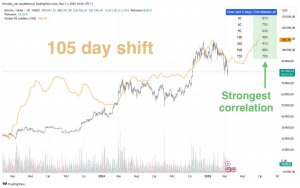How Capital Structure Theory Changed the Way We Do Business

Capital structure is the method by which a company finances its operations and growth (Tuovila, 2019). Whether it has an effect on a firm’s value has been the subject of significant scholarly work going back to the mid-20th century.
Myers (2001) suggests that the study of capital structure began with Modigliani and Miller (1958) who used as a premise a perfect market (i.e., a market without taxes, bankruptcy costs, agency costs, and asymmetric information). From this starting point, they conclude that capital structure does not affect the value of the firm (Modigliani & Miller, 1958).
Chaplinsky and Harris (1996) suggest that, despite the limitations of the premise, Modigliani and Miller’s work helped to frame the discussion such that others could investigate how capital structure affects value in the real world (i.e., with taxes, bankruptcy costs, agency costs, and asymmetric information).
Chaplinsky and Harris (1996) argue that capital structure theory has evolved since Modigliani and Miller to incorporate each of the elements that Modigliani and Miller disregarded. The first additions to the literature pointed to the fact that tax deductions on interest could incentivize the use of debt (Miller, 1977), as well as the fact that failure to meet debt obligations could cost a firm significantly (Shleifer & Vishny, 1989).
Later, studies examined how the incentives and behaviors of the decision makers of a business, such as managers and investors, influence capital structure strategy (Jensen & Meckling, 1976). Another set of studies examined how imperfect information influenced capital structure strategy (Myers & Majhif, 1984).
Three theories of capital structure arose in addition to Modigliani and Miller (Myers, 2001): Tradeoff Theory, which argues that companies seek capital structures that provide a healthy balance between tax advantages of additional debt and the risk of potential financial distress of not being able to pay back the debt; the Pecking Order Theory, which finds that firms prefer to finance new investments through internal funds and only turn to debt when internal cash flow is insufficient; and the Free Cash Flow Theory, which says that a company will take on increasing debt as long as cash flow exceeds opportunities (Myers, 2001).
References
Chaplinsky, S., Harris, R. (1996). Capital structure theory: a current perspective. Retrieved from https://hbsp.harvard.edu/download?url=%2Fcourses%2F688826%2Fitems%2FUV0105-PDF-ENG%2Fcontent&metadata=e30%3D
Jensen, M. C., Meckling, W. H. (1976). Theory of the firm: managerial behavior, agency costs and ownership structure. Journal of financial management 3(4): 305– 60. Retrieved from http://online.kottakkalfarookcollege.edu.in:8001/jspui/bitstream/123456789/335/1/1-s2.0-0304405X7690026X-main.pdf
Miller, M. H. (1977). Debt and taxes. Journal of finance. May 32(2): 261–76. Retrieved from https://onlinelibrary.wiley.com/doi/full/10.1111/j.1540-6261.1977.tb03267.x
Modigliani, F.; Miller, M. (1958). The cost of capital, corporation finance and the theory of investment”. American Economic Review. 48 (3): 261–297. Retrieved from https://s3.amazonaws.com/academia.edu.documents/30867396/modiglianiandmiller1958.pdf?response-content-disposition=inline%3B%20filename%3DThe_Cost_of_Capital_Corporation_Finance.pdf&X-Amz-Algorithm=AWS4-HMAC-SHA256&X-Amz-Credential=AKIAIWOWYYGZ2Y53UL3A%2F20200225%2Fus-east-1%2Fs3%2Faws4_request&X-Amz-Date=20200225T223106Z&X-Amz-Expires=3600&X-Amz-SignedHeaders=host&X-Amz-Signature=b8e82e0e25be29722250268bf241bf2b2a1694a709a99fed7e084606c91ee6c2
Myers, S. (2001). Capital structure. Journal of economic perspectives—volume 15(2): 81-102. Retrieved from https://pubs.aeaweb.org/doi/pdf/10.1257/jep.15.2.81
Myers, S., Majluf, N. (1984). Corporate financing and investment decisions when firms have information that investors do not have. Journal of financial economics 13 (2): 187–221. Retrieved from https://www.nber.org/papers/w1396.pdf
Shleifer, Andrei and Robert W. Vishny (1989). Management entrenchment: the case of manager-specific investments. Journal of financial economics 25: 123–39. Retrieved from http://scholar.harvard.edu/files/shleifer/files/management_entrenchment.pdf
Tuovila, A. (2019). Investopedia: Capital structure. Retrieved from https://www.investopedia.com/terms/c/capitalstructure.asp






